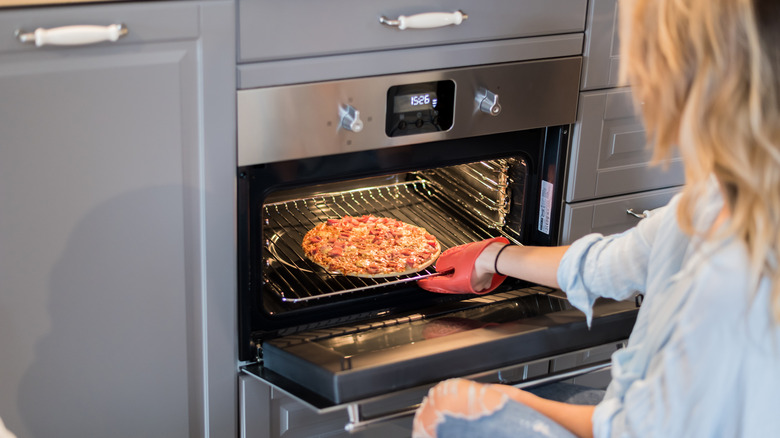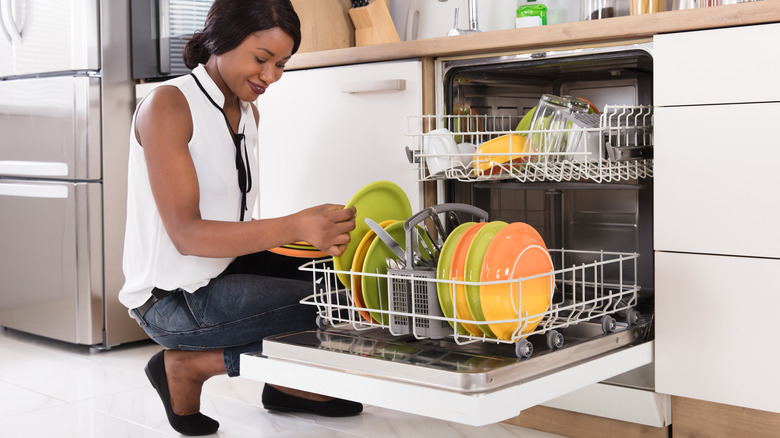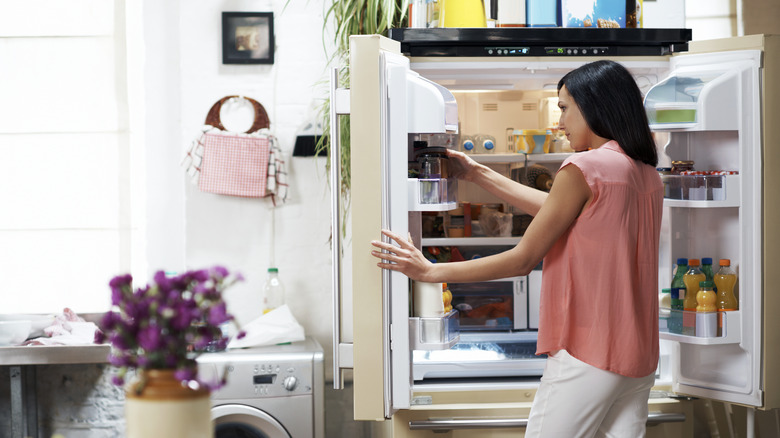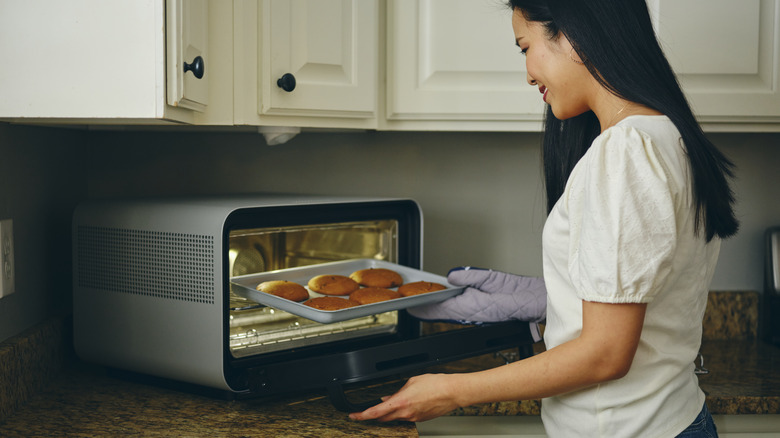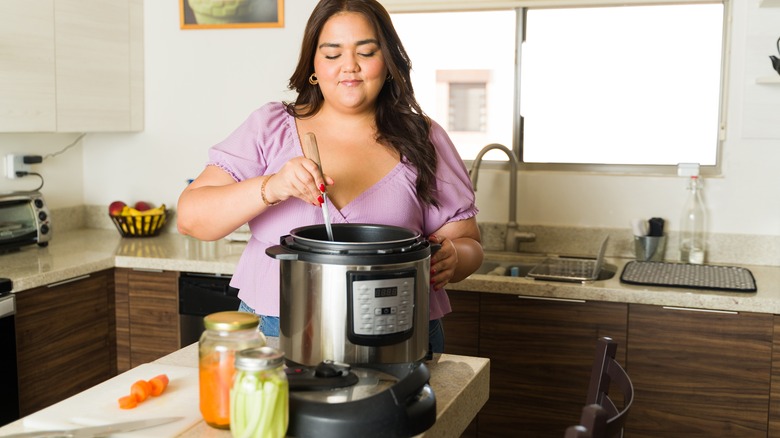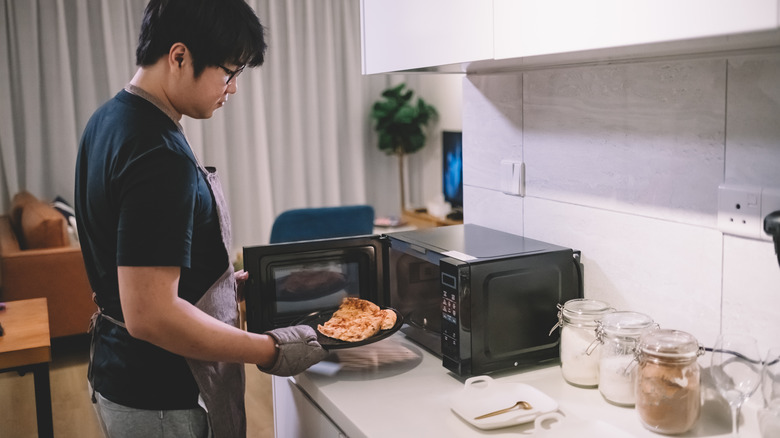The Most Expensive Appliances To Run In Your Kitchen Every Year
The kitchen houses many appliances, from stand mixers to chest freezers. Often, the devices are plugged in around the clock, and that power usage shows up on our energy bills. But how much does it really cost to run your kitchen appliances? We sorted through the average rates to operate your kitchen's machinery and have the seven electronics that cost the most to run annually.
While these calculations are estimates, they put into perspective which machines are power guzzlers and which don't require much energy to function. The true cost to run your appliance will depend on how energy-efficient it is, how often it is in use, and your local energy rates. For your specific device, you can find out how it contributes to your utility bill using an energy calculator. You can filter by state to get the most accurate estimate. You just need to know the appliance's wattage.
Cooking requires a lot of energy
Is a kitchen really a kitchen without stovetops and ovens? These appliances that make or break the room are major contributors to your energy bill. Research from Electric Rate determined that using an electric stove and oven for one hour a day amounts to $132 over a year. Gas appliances use less electricity, resulting in an annual bill of $90 for the same daily usage.
Clean dishes will cost you
Dishwashers save you physical energy since you don't have to scrub any pots, but they require electric energy to operate and are one of the most expensive appliances to run in your kitchen. Your yearly bill will depend on how often you run the appliance and how energy-efficient the device is. ENERGY STAR reported that a standard ENERGY STAR-certified dishwasher costs $55 annually. An older model dishwasher, or one that doesn't have the energy-efficient tag, will cost more. Perch Energy estimates a medium-sized dishwasher operated for one hour daily contributes $104 to your annual bill.
It's pricey to keep things cool
Almost every home in the United States has a refrigerator — some even have more than one. It is no surprise that this appliance that runs 24/7 is a great electric expense in the kitchen. According to data from the U.S. Energy Information Administration, a home's primary refrigerator costs $87 annually to operate, while a secondary one costs $66. Those with a standalone freezer average another $74 to keep things frosty. How often you open the refrigerator doors, the appliance's setting, and even where you place your fridge impact your energy expenses.
Coffeemakers give and take energy
It takes energy to make your energy-boosting morning cup of joe. A single-cup coffeemaker running 10 minutes per day ends up costing $24 a year, according to Electricity Plans' calculations. However, a drip coffee machine producing up to 12 cups uses more energy, showing up as a large number on your expenses. A full-sized drip coffeemaker averages $47.50 annually when used one hour a day.
Toaster ovens are a convenient use of power
According to the National Grid, toaster ovens cost an average of $1.50 a month, for an annual total of $18. Of course, the more you use the device, the greater it will impact your energy bill. However, toaster ovens are a considerably cheaper energy expense than a standard gas or electric oven. It might save you money turning on your toaster oven instead of the large oven when you're only baking a small batch.
Slow cookers are cost-effective
Whether you use your slow cooker for making one-pot dinners or homemade candles, $1.25 is all the cost of energy it uses per month, averaging $15 a year, according to National Grid. Like the toaster oven, using the slow cooker instead of the standard gas or electric oven may be a way to help reduce your energy costs at home.
Microwaves aren't power-hungry
Microwaves are another appliance bought for convenience, and fortunately, it doesn't cost much money to operate. Energy Sage calculated that using your microwave for 15 minutes each day amounts to roughly $11 per year in energy costs. It is not a power-guzzling device like the refrigerator and is mainly used for short periods, making it a comparatively low contributor to electricity bills.

